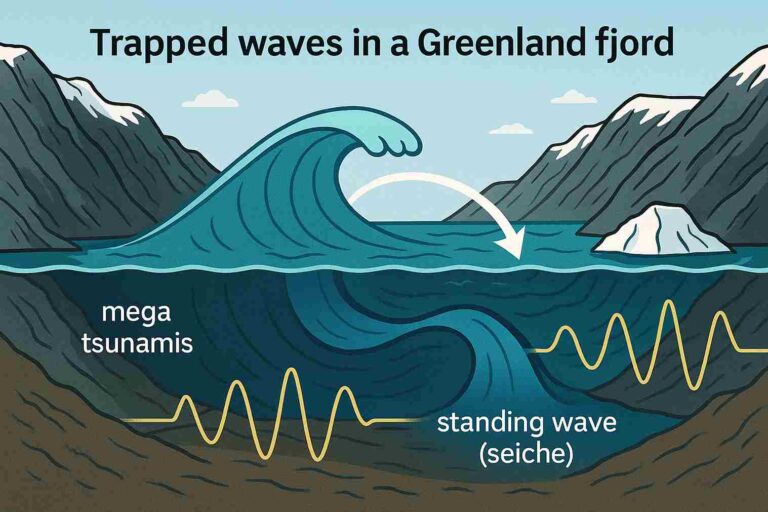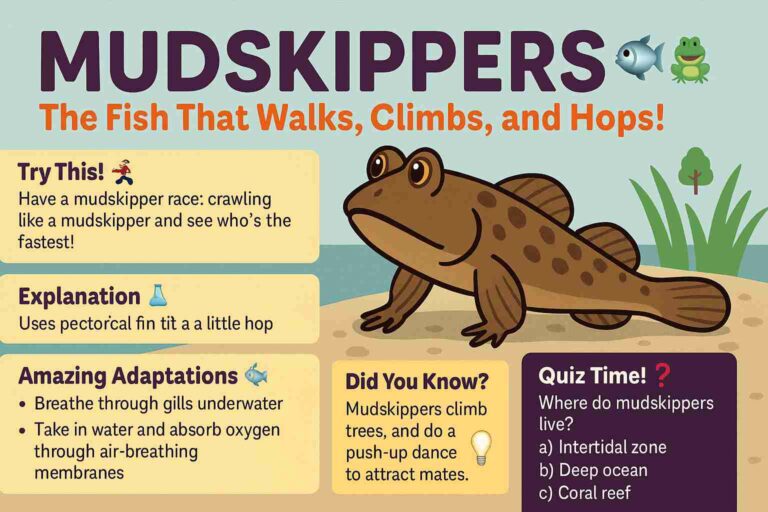
Science Mysteries for Curious Kids
rubera Cave is one of the deepest caves on Earth — but what’s at the very bottom? Explore this kid-friendly science mystery filled with theories, fun facts, and adventure!
Introduction: A Journey Into the Dark Unknown
Imagine standing at the entrance of a cave so deep, so dark, and so twisty that sunlight never reaches the bottom. Explorers go in with ropes, lights, and courage… and sometimes it takes weeks to climb all the way down.
This isn’t a cave from a storybook. It’s real.
It’s called Krubera Cave, and it’s one of the deepest caves on Earth — deeper than many skyscrapers stacked on top of each other!
But here’s the big mystery:
What lies at the very bottom?
No one knows for sure — yet.
Let’s go exploring…
Background: Meet Krubera Cave (Also Called “The Everest of Caves”)
Krubera Cave is hidden in the Arabika Massif mountains in Georgia, a rugged, rocky region full of underground secrets.
Key facts kids will love:
- It plunges down over 2,200 meters (that’s 2.2 km straight down!)
- The deeper you go, the colder and wetter it gets
- Parts of the cave are filled with water — explorers must swim through narrow tunnels
- It’s so big underground that it feels like entering another planet
Scientists have been exploring it since the 1960s, but the full cave system is still not completely mapped!
Theories: What Could Be at the Very Bottom?
Since only a few teams have reached the deepest known point — and there may be deeper passages no one has discovered — scientists have several ideas:
1. Underground Rivers 🌊
Caves often hide fast-flowing rivers. Some may lead to even deeper tunnels that humans haven’t reached.
2. Rare Creatures 🦐
Deep caves are home to strange animals:
- Blind fish
- Transparent insects
- Tiny creatures that glow
Scientists already found new species inside Krubera that don’t exist anywhere else!
3. Secret Chambers 🕳️
Some explorers believe there could be giant underground rooms — like nature’s hidden halls — that remain undiscovered.
4. Bottomless Passages 😱
Not truly bottomless, of course — but some shafts may be so narrow or flooded that no human (yet!) can enter them.
5. Geological Time Capsules ⏳
Layers of rock inside deep caves can reveal secrets about the Earth millions of years ago.
Fun Facts From the Depths
- Krubera Cave is so deep that explorers carry maps, climbing gear, scuba gear, food, and sometimes even tiny boats!
- Temperatures stay around 2–7°C — brrr!
- The deepest known animal found in Krubera is a tiny insect called Plutomurus ortobalaganensis.
- The cave was only measured to its record depth in 2012 — which means there is still so much left to discover.
🧩 Interactive Mystery Challenge!
Quick Quiz:
- Krubera Cave is known as the:
A) Grand Canyon of caves
B) Everest of caves
C) Volcano of caves - Which creature has been found deep inside Krubera?
A) Polar bear
B) Blind insect
C) Giant squid
Answers: 1 → B, 2 → B
Think Like a Cave Scientist:
If you were exploring Krubera, which tools would you pack?
- A) Flashlight
- B) Rope
- C) Helmet
- D) Waterproof suit
- E) All of the above
(Yes — E, all of them! Cave exploration is serious science.)
Why It Matters
Deep caves help scientists understand:
- How Earth formed
- How life survives without sunlight
- What Earth’s hidden underground systems look like
- How animals evolve in extreme environments
Exploring Krubera is like exploring a secret laboratory deep inside our planet.
Encouragement to Explore
The world isn’t just about what’s on the surface — some of the greatest mysteries hide deep below our feet.
Who knows? One day you might be the explorer who discovers a new chamber, a new creature, or even a new deepest point.
The adventure begins every time you ask:
“What’s hiding in places we’ve never reached?”






